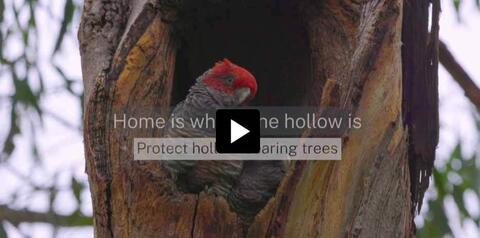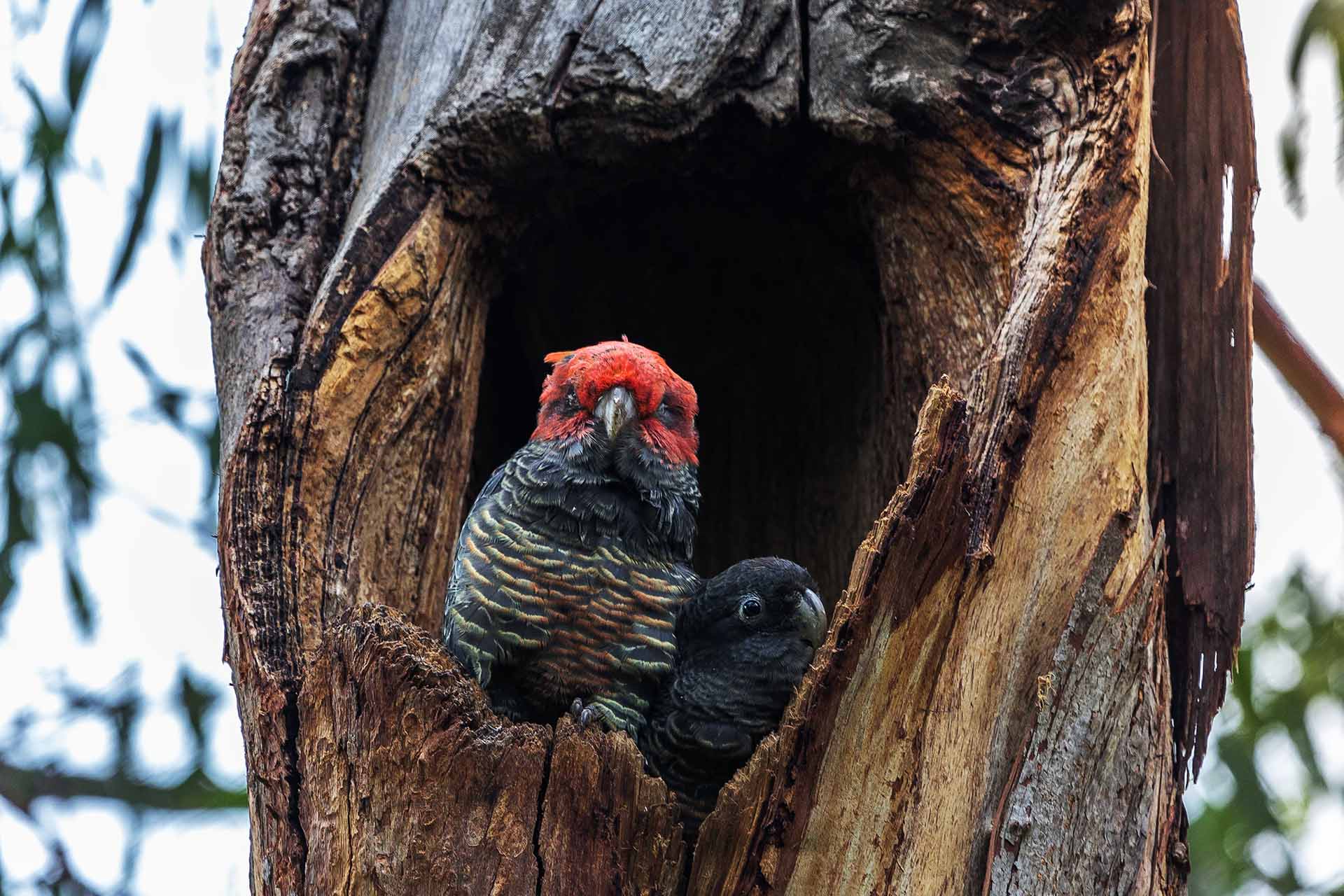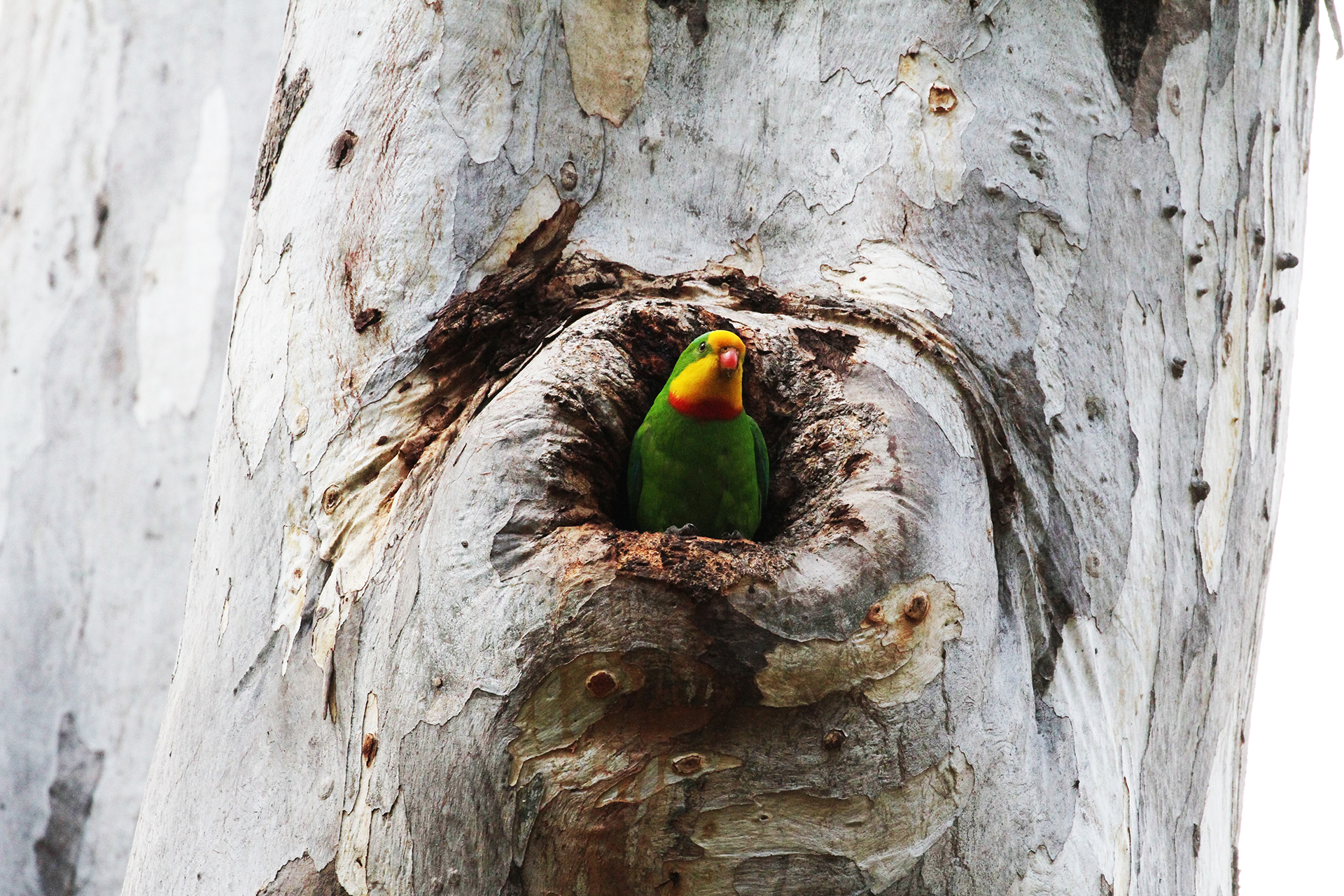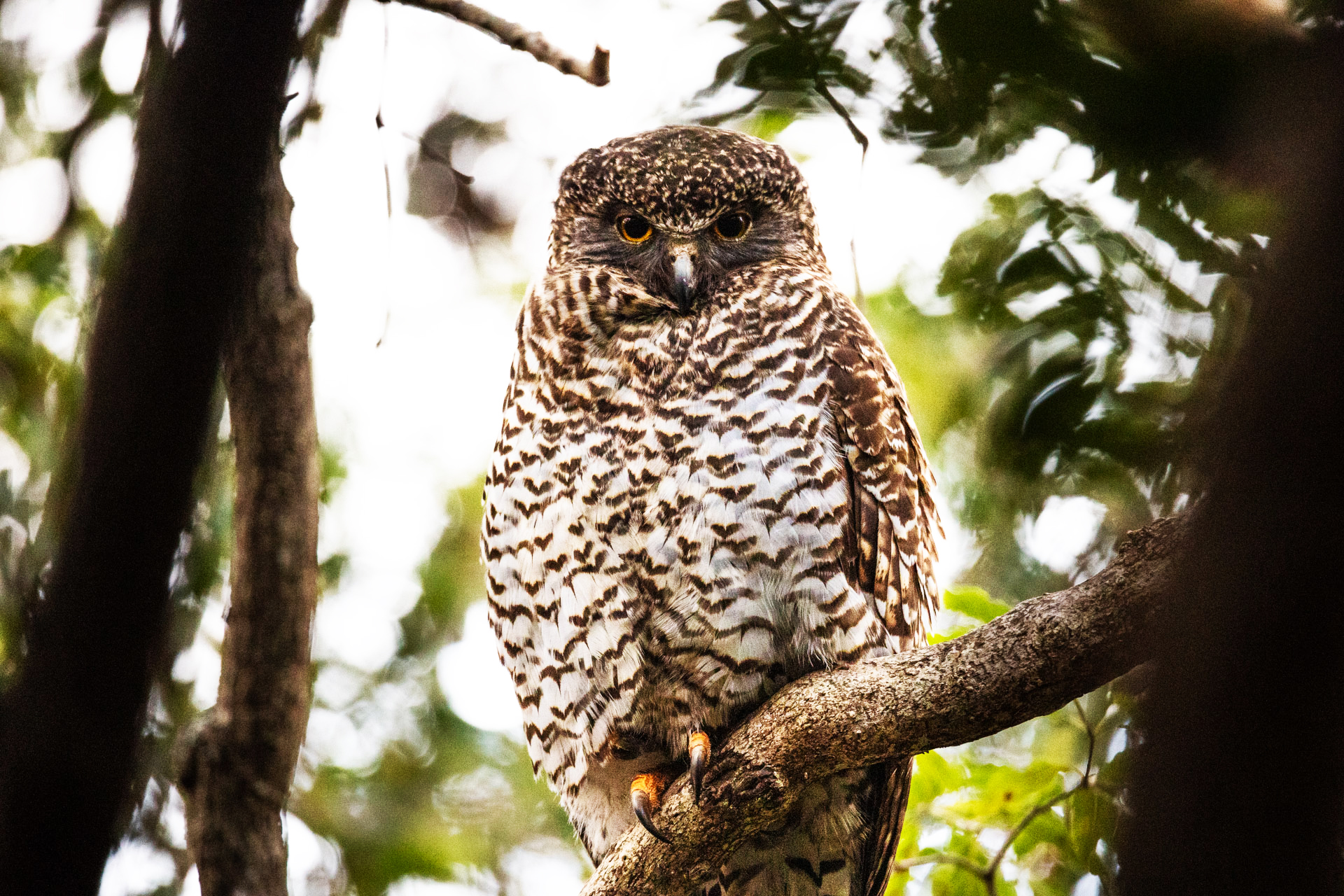Trees are essential for native wildlife to find food, shelter, and places to roost and nest. Hollow-bearing trees are especially important because many species use these hollows daily and seasonally to nest and raise their young.
In New South Wales, at least 174 animal species rely on tree hollows, including 46 mammal species, 81 bird species, 31 reptile species, 16 frogs and countless invertebrates. Among these species, 40 are threatened, and the availability of hollow-bearing trees is crucial for their survival.
Tree hollows take hundreds of years to form but are disappearing quickly and are not easily replaced. However, we have the opportunity to take action and make a difference.
What is a tree hollow?
Tree hollows are holes in the trunk or branches of living or dead trees. They provide a safe place for wildlife to hide from predators and breed. The thick walls and excellent insulation of hollows create the perfect environment to raise young and protect them from bad weather and temperature changes. Different sizes, depths, volumes, and positions of hollows are needed to meet the needs of various wildlife species. These factors determine which species will use a hollow and how often they will use it.
Tree hollows are caused by wind breakage, lightning strikes, and attacks from termites, insects, or fungi. They usually form in older, mature trees, but can also form in younger ones depending on the species. Wildlife can also shape tree hollows using their beaks, teeth, and claws.
Hollows vary in size, from small openings of 2 to 6 cm to large ones with entrance diameters of 18 to 30 cm or more.
Hollows take a long time to form. Small, narrow hollows suitable for small wildlife like the brush-tailed phascogale (Phascogale tapoatafa) and eastern pygmy-possum (Cercartetus nanus) can take 100 years to form.
Medium-sized hollows for wildlife like the superb parrot (Polytelis swainsonii) can take around 150 years.
Larger and deeper hollows for animals like the powerful owl (Ninox connivens) or masked owls (Tyto novaehollandiae) can take over 200 years.
Most eucalypts and other long-lived trees produce hollows more easily than stringybarks and ashes. For example:
- river red gum (Eucalyptus camaldulensis)
- manna gum (Eucalyptus viminalis)
- mountain grey gum (Eucalyptus cypellocarpa)
- yellow box (Eucalyptus melliodora).
Other native trees and shrub species such as brush box (Lophostemon confertus) and Antarctic beech (Nothofagus moorei) can also produce hollows.
How you can help
Let's work together to protect the homes of the wildlife we love.
- Keep and protect all trees with hollows, even if they are dead.
- Allow native vegetation to regrow and regenerate.
- Leave fallen logs and debris on the ground.
- Learn about the importance of tree hollows as homes and share this knowledge with your neighbours and community.
- Consider installing nest boxes as a last resort if there are very few natural hollows.
Benefits of retaining hollow-bearing trees on your property
More farmers are keeping or reintroducing paddock trees to boost agricultural productivity and provide habitat for native wildlife.
Young trees are valuable even if they don't have hollows yet, as they will likely develop hollows in the future. Keeping and restoring native vegetation on private land has many benefits, including:
- providing shelter and shade for livestock, pasture, and crops
- reducing wind speed by up to 50% and preventing soil erosion
- improving soil health and productivity through better water filtration and nutrient cycling
- offering a habitat for native species
- supporting ecosystem services.
Hollow-bearing trees are also common in urban areas and attract much of the wildlife we appreciate in our suburban communities. If you don't have hollow-bearing trees in your backyard, or live in an apartment, visit your local park, golf course or riverbank to spot tree hollows and, if you're lucky, their residents.
Register a hollow and add a wildlife sighting
Think twice about firewood collection
Uncontrolled firewood collection can lead to the loss of tree hollows.
- Removing firewood from national parks, state conservation areas and nature reserves is prohibited.
- Report incidents of illegal firewood collection to the NSW National Parks and Wildlife Service on 1300 072 757 or Crime Stoppers 1800 333 000.
More information
- Hollows as homes – Register active hollows and monitor who is using them
- Birdlife: birds on farms – learn more about birds and their habitat on rural farms
- Protect and restore paddock trees – ways to improve natural assets on a farm
- Landcare – enquire with your local Landcare group to get involved in private land conservation




